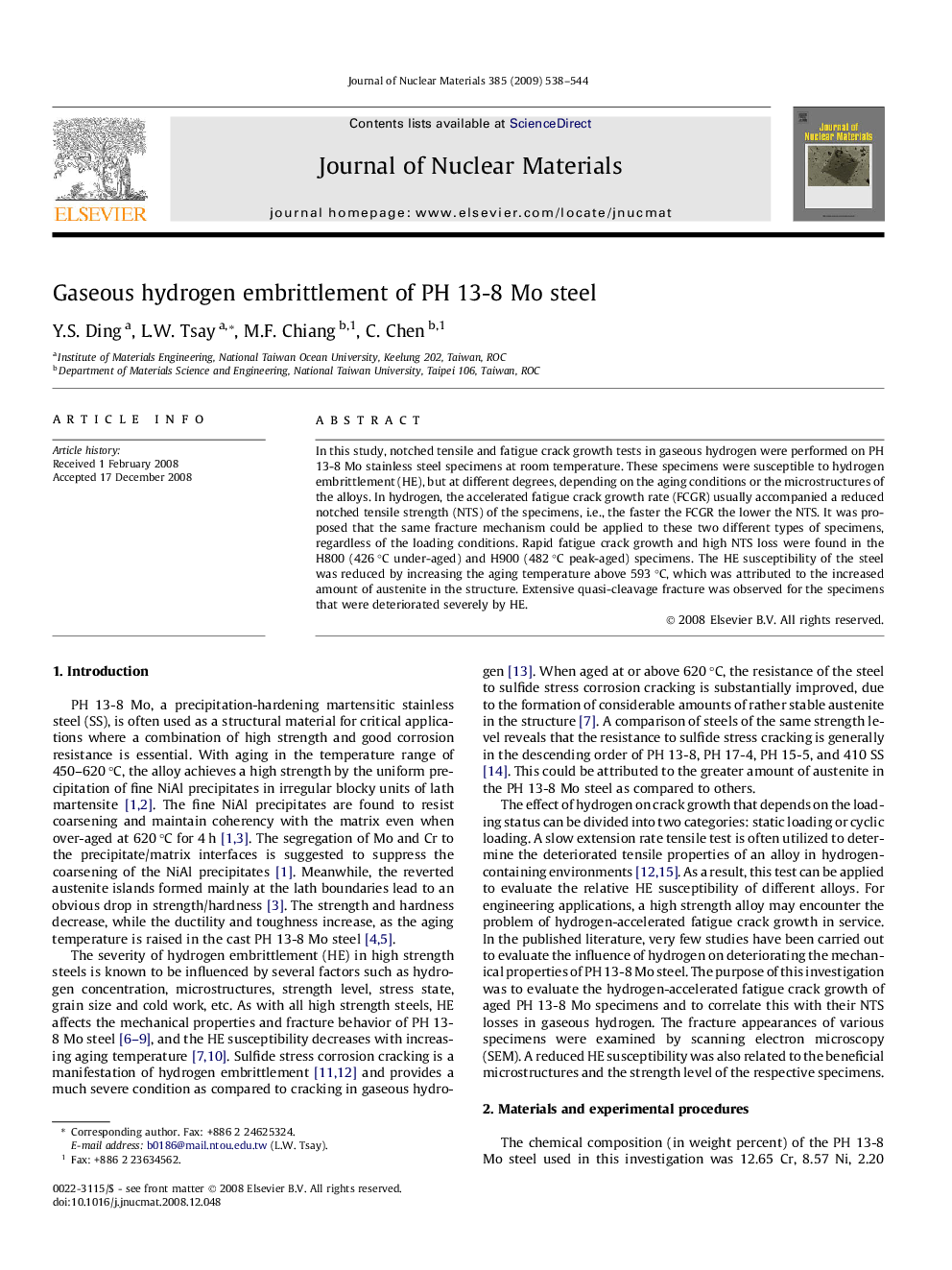| Article ID | Journal | Published Year | Pages | File Type |
|---|---|---|---|---|
| 1568122 | Journal of Nuclear Materials | 2009 | 7 Pages |
In this study, notched tensile and fatigue crack growth tests in gaseous hydrogen were performed on PH 13-8 Mo stainless steel specimens at room temperature. These specimens were susceptible to hydrogen embrittlement (HE), but at different degrees, depending on the aging conditions or the microstructures of the alloys. In hydrogen, the accelerated fatigue crack growth rate (FCGR) usually accompanied a reduced notched tensile strength (NTS) of the specimens, i.e., the faster the FCGR the lower the NTS. It was proposed that the same fracture mechanism could be applied to these two different types of specimens, regardless of the loading conditions. Rapid fatigue crack growth and high NTS loss were found in the H800 (426 °C under-aged) and H900 (482 °C peak-aged) specimens. The HE susceptibility of the steel was reduced by increasing the aging temperature above 593 °C, which was attributed to the increased amount of austenite in the structure. Extensive quasi-cleavage fracture was observed for the specimens that were deteriorated severely by HE.
